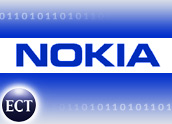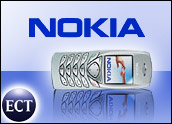
Handset maker Nokia has joined with a slew of European-based partners to launch a test of a mobile television service in the Finland capital city of Helsinki.
Nokia and its partners, including MTV and the Finnish national broadcasting company on the content side, as well local mobile carriers and technology firms, said that while limited in scope, the test will help the industry understand how mobile consumers might use wireless TV capabilities.
“The project tests mobile TV services and consumer experiences, as well as the underlying technology,” Nokia said in a statement.
Previous Test
The phone company said it conducted a smaller test among what it called “friendly users” last year, shortly after the IP Datacasting (IPDC) protocol was found to be in conformance with standards adopted by the European Telecommunications Standards Institute for mobile TV services.
Nokia, the world’s largest mobile handset maker, said that in that earlier test, users liked to watch mobile TV in their cars and in public places such as cafes and also used the devices at home and at work. Users primarily sought out news, weather, sports and current issues programming, though some also used the devices to access entertainment such as drama and comedy series.
The service sends real-time TV signals to Nokia 7710 smartphones equipped with accessory appliances.
Other mobile TV trials are under way in Asian countries, especially South Korea. Analysts say the tests will likely help work out some of the bugs in the technology that could make broader applications possible, but aren’t likely to jumpstart a mobile-TV revolution.
“The range of services that smartphones will enable has yet to be worked out,” Gartner research Vice President Ken Dulaney told the E-Commerce Times. “Vendors and carriers are going to try to develop the broadest menu possible.”
Other analysts are even more skeptical about the potential for mobile TV. A study released last month by Strategy Analytics said it likely would be two years or more before such services are widely available in the U.S. and mainland Europe.
Step by Step
“Consumer demand for mobile TV remains highly uncertain, and we remain unconvinced that consumer appetite for mobile TV services exists outside of niche segments,” Strategy Analytics analyst Phil Taylor said.
Taylor said vendors should consider testing options that offer snippets of streaming video, such as the V CAST service being developed by Verizon Wireless, rather than actual full-length TV broadcasts.
The research firm said that in addition to questions about consumer appetite for constant access to TV, technology questions remain about how to effectively — and cost-effectively — translate TV signals into use on mobile devices.
Also, the devices that would receive the signals remain another limitation. “It’s not clear that people want to watch entire TV programs on small screens,” Taylor said.
For its part, Nokia has made it clear it plans to leave no stone unturned in searching for potential next-generation mobile technologies and that it won’t be left behind in the push to forge alliances to make it happen.
The Finnish company recently forged a pact with Microsoft to ensure that music could be swapped between Nokia handsets and PCs running Windows software and another with Macromedia to enable mobile devices to use a customized version of the Flash player for Web sites.
It also unveiled a soon-to-be-launched phone at a European trade show that it believes can rival and compete with Apple’s wildly popular iPod.
























































Social Media
See all Social Media